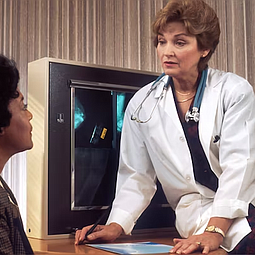Combating Osteoporosis in a New Way
July 24, 2023 at 3:46 p.m.
A proven and effective medication for osteoporosis, which is currently only available as an injection, can be administered orally using a novel “robotic pill,” according to a new California study. Researchers found clinical evidence of safe and successful delivery of the osteoporosis drug teriparatide through an oral robotic pill.
When a person swallows the robotic pill, it moves through the stomach intact. In the intestine the pill releases a self-inflating balloon with a microsyringe, which injects a drug-filled microneedle and delivers the medication. "The data from this study are very encouraging and should give hope to those suffering from chronic conditions that require painful injections, like osteoporosis, that an oral alternative could be on the way.”said Arvinder Dhalla, who leads Clinical Development at Rani Therapeutic in San Jose, California. “The intestines do not have pain response to needles, so the injection is painless.”
The needle rapidly dissolves, and the medication is absorbed while the delivery mechanism deflates and is safely passed out of the body. “The robotic pill, which is essentially a swallowable auto-injector in the form of a pill, is designed to deliver the drug safely and efficiently as a painless intestinal injection,” said Dhalla.
The Phase I study of 39 healthy women evaluated the safety, tolerability and movement through the body of the robotic pill known as RT-102. It contained a dose of the drug teriparatide (PTH 1-34), which is a synthetic form of the natural human parathyroid hormone. It has been in clinical use for decades as an injectable medication (under the brand name Forteo®) for rebuilding brittle bones of osteoporosis patients. It is taken as a daily injection for up to two years.
Study participants were divided into three groups. Two groups received either a lower or higher dose delivered with the robotic pill, and the third group received a standard injection of teriparatide. Fluoroscopic imaging was used to track the robotic pill throughout the body. Drug concentrations were measured in blood samples collected over six hours. The study found the bioavailability (the ability of the drug to be absorbed and used by the body) of the drug delivered by the robotic pill was comparable to or better than the drug given via the injection.
“This breakthrough technology of converting injections into oral pills is a significant step forward towards ending the burden of painful injections for millions of patients suffering from chronic diseases,” Dhalla said.
John Schieszer is an award-winning national journalist and radio and podcast broadcaster of The Medical Minute. He can be reached at medicalminutes@gmail.com.





